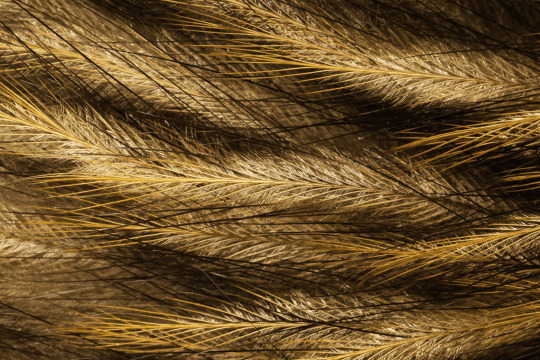#[real id: color shifted kiwi feathers from a photo by grant maslowski]
Text
Myths and Misconceptions: Dragon "Fur"
Dragons exist in the same paradox as other animals like sharks—while they are well-studied, myths about them abound and are widely accepted by society, often to the detriment of the animal themselves. While I've briefly discussed the myth of fire-breathing and am planning to go into myths such as dragons being "man-eaters" and the myth about their ability to hypnotize their prey, today I'd like to talk about a less damaging dragon misconception: that dragons of the Draceous family have fur!
Previously considered to be in the family Pachysquamidae, we now know that Draceous dragons are their own separate family. One thing that makes them stand out is their manes and sensory whiskers. While the thin, closely-gathered fibers give the appearance of hair or fur, their manes actually made up of thousands of specialized feathers. These feathers most closely resemble those of Kiwis, a small flightless bird found in New Zealand, in that they lack afterfeathers/aftershafts (smaller down feathers which provide insulation to the body from the main feather shaft). Other feathered dragons, such as amphipteres, possess feathers more similar to those of other birds.
One common belief about Draceous dragon manes I can confirm, however, is that they're incredibly soft. Here's a closeup on the mane of a 12-year-old Whiskered River Dragon (Potamodraconis chinensis melavultus) I photographed at the Point Defiance Zoo and Aquarium, which has a fantastic dragon exhibit I highly recommend visiting:

Their sensory whiskers are also feathered. While on birds filoplume feathers are short—rarely measuring more than a few inches long even in the largest species—Draceous dragons have long ones running down their whiskers. These feathers are extremely sensitive and are used in much the same way cats use their whiskers or humans use their fingertips. Given the often dark aquatic habitat of many Draceous dragons, these filoplume-covered whiskers likely help guide them when visibility is low. Draceous dragons also have poor visibility close to their noses, and anything unfamiliar without a distinct scent is often investigated with rigorous whisker touching. Without filoplumes, they'd be both literally and metaphorically in the dark!
#dragon evolutionary biology#dragon myths and misconceptions#draceous#[real id: color shifted kiwi feathers from a photo by grant maslowski]#long post
11 notes
·
View notes